It is now over a decade since I started working with the weavers in Nepal and in that time we have learnt a great deal about each other’s working methods and how best to develop ideas and push our skills.
The wool used is grown in Tibet and travels to the Kathmandu valley by mule over the Himalayas. In the valley it is spread out by the river bank to be sorted and graded before being sent to a different factory to be spun, hanked and dyed. After dyeing and drying in the sun, the hanks are wound into huge balls, ready for the weavers. All this work is done by hand, at no time in the production of the wall carpets is any kind of machinery used. Only in the case of large commercial orders is this not true and in these cases electrically driven dye vats are used.
The weaving is all produced on upright looms with one to ten people working on a carpet at the same time. The weavers work from graphs produced in the factory.
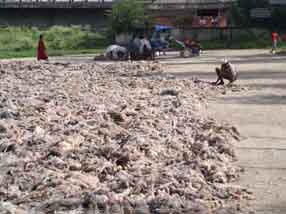
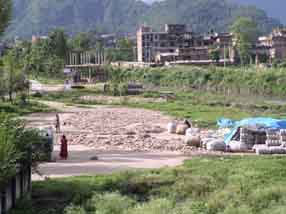
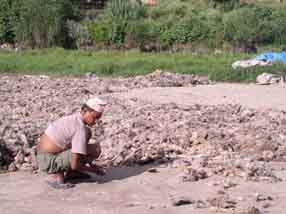
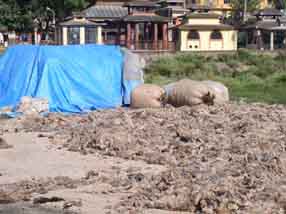
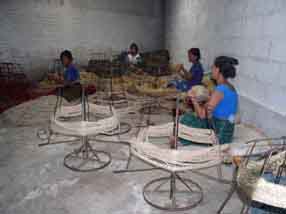
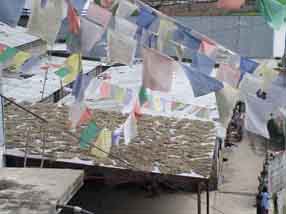
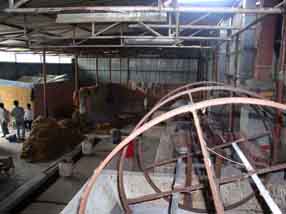
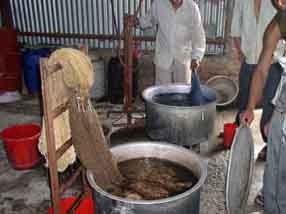
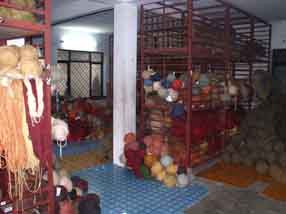
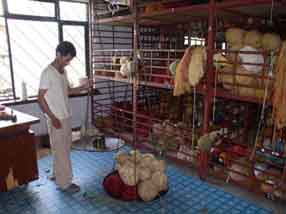
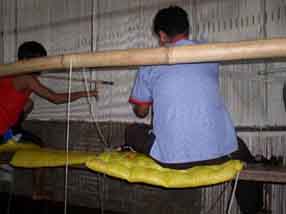
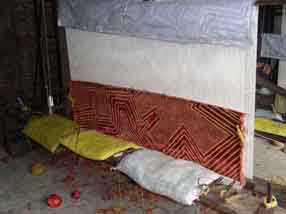
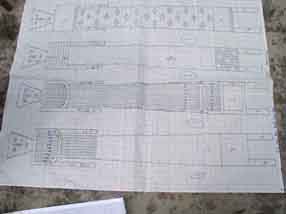
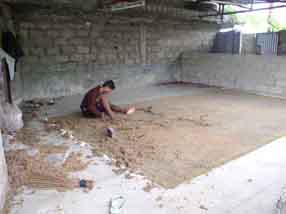
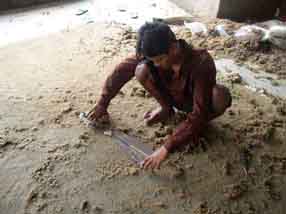
As my designs are rather more complicated I produce the graphs myself in London and then take them out to the weavers. The reason for this is, at the graphing stage the designs have to be translated onto distorted graph paper, which allows for the slight distortion that takes place in the weaving process. In translating the designs, modifications and changes to lines have to be made. Every mark in one of my designs is important and it is at the graphing stage many decisions about these are taken. Right from the start of working in Nepal I have always insisted on graphing out my own designs.
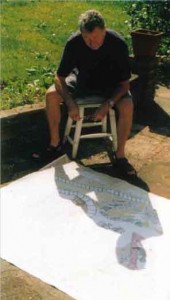
Most of the graphs the weavers normally work from are quite simple. At the beginning of this working partnership, because my designs were so complex only the most experienced weavers were given my designs to weave!
I can well remember presenting the first rather complicated design and noting the concern on the faces around me. After a few teething problems these concerns where overcome and over the last decade we have all learnt to work together stretching each other’s skills and abilities. This has only been possible because I had good technical weaving skills and the weavers had a flexible approach. Because of this working relationship I have been able to introduced new weaving techniques and design ideas. Now carpets can be woven in different length piles, have flat woven areas against knotted areas, and the cut sculpting which was only used in finishing is now used as a decorative devise.
I have watched the finished cutting with fascination, it takes such skill. In learning more about this, I began to think of ways to use these skills to enhance the designs. So began development of cutting into plain grounds. When I first asked that this be tried, people thought I had flipped, but on seeing the results we achieved, they realised the potential.
The company has been incredibly supportive and willing to try anything I have asked. Our latest development is to introduce Hemp yarn into some pieces. This allows for greater textural interest to be introduced as well as giving different surface and colour effects.
At the start all my designs were inspired by Aboriginal Art, based on my experiences from many visits to Australia. After several years and many visits to Nepal the design inspiration changed. Through trekking in the Nepalese Himalayas I become interested in the Nepalese landscape, and this lead to my second exhibition, The Forbidden Kingdom, inspired by Nepalese landscape and culture
My latest exhibition has been inspired by my drawings, paintings, photographs and of my experiences of British Landscapes.
